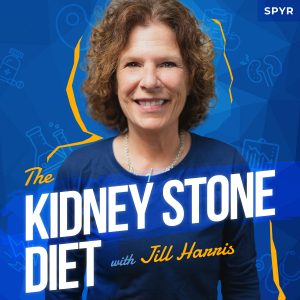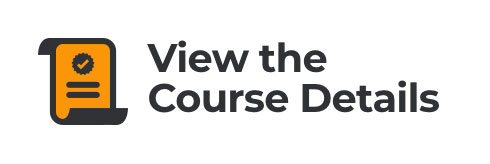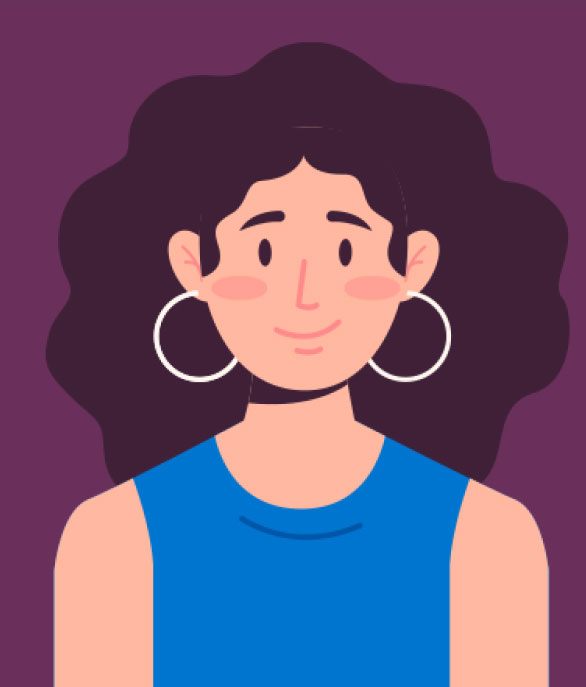This week, Jill answers an FAQ about oxalate and sweet potatoes.
Jeff Sarris: Welcome back to the Kidney Stone Diet podcast, the show about reducing your kidney stone risk and living your best life. I’m your host and fellow student, Jeff Sarris.
Jill Harris: And I’m Jill Harris, your kidney stone prevention nurse.
Jeff Sarris: You’ve got your bright colors going on again. We were talking about that earlier how you’re wearing so many more bright colors than he used to.
Jill Harris: I’m telling you, once I embrace something, it’s all over. Now, I’m just like a bag of Skittles at any good time. I really am. I don’t know. I just am so happy about it. I’m just one big colorful thing.
Jeff Sarris: Uh huh. But yeah, I mean, do you you find happiness in the brightness then, huh?
Jill Harris: I am. I am! And, now, you know, if I’m going out, it’s always black. Ain’t no lime green. I am a minimalist in my outerwear. Black jeans, black t-shirts. I just love it. But, in my everyday life, I’m like, I’m just embracing it. I’m just embracing it. It’s just happy and good, and, again, it’s so cloudy. But I’m going to continue this on in the summer. I sure am. I’m converted.
Jeff Sarris: Yeah, we’ll have to see. I don’t know if I’ll get that far, but I’m planning on, you know, some like white shirts to go with the black.
Jill Harris: White shirt. We’ll start you off now.
Jeff Sarris: Amara actually got a white hoodie when we were in Miami last and she was pushing back so much. I’m like, “It looks awesome. You should wear it!” And now she wears it all the time. So, who knows? Maybe I’ll be next. We’ll see.
Jill Harris: You should.
Jeff Sarris: But, yeah, should we dive in this week because we are going to do one more FAQ.
Jill Harris: Yeah, you know, I know folks, the caller-in things, but sometimes I’m like, “Oh, we need this video, this video, this video,” because these are questions I get every day in the Facebook group. So, now we will just have a video that we can say “Watch this,” instead of answering the same question. These are things that you know, for 24 years, people have asked on the daily. So, we have to. And there’s millions of them. I mean, I can come up with 20 in five minutes that we should be doing. There’s so many, so, yeah, let’s do it.
Jeff Sarris: It’s funny, too, because now you say 24 years and that just always reminds me that we’ve been doing this for years already. It feels like we just started the show. But, I mean, this will be– we’re at 130, so 156 would be three years. So we’re coming up on three years in like half a year. So, we’re two and a half years in. We’re doing too much math for right now, but you know what I’m saying. When you say 24 years, I’m like, “Oh yeah, when we started it was like 21 or 22!” So yeah, pretty wild. Yeah, anyway, today’s topic we’re talking about sweet potatoes.
Are sweet potatoes high in oxalate?
Jill Harris: Well, already I’m excited because I know Dave our other partner he’s gonna make probably automatically make something orange and orange is really my favorite color. Orange is my favorite color. I can already see the the thumbnail is going to be orange and makes me happy. Sweet potatoes. “Jill, I’m so sick of not being able to have a sweet potato!” “Well, Christopher, who said you couldn’t have a sweet potato?! That’s the silliest thing I’ve ever heard.” “But, Jill, they’re high in oxalate!” And, people, I’m a gym rat and I haven’t done anything with it, but I’m a certified personal trainer, too, just because I love it all. so I just got certified.
But, you know, it’s the regular bodybuilder kind of diet. Sweet potato, chicken, broccoli, sweet potato, chicken, broccoli. I get a lot of fitness people that get kidney stones because they’re eating five sweet potatoes a day. So, Harvard, which is the oxalate list we use at Kidney Stone Diet, sweet potatoes, for one cup, are 28 milligrams of oxalate. Harvard says they are very high. So, when people see the adjectives, “very high,” they just take sweet potatoes out of their diet. Because Harvard’s original list has those adjectives–it will have the oxalate level. It will have the oxalate value and it will have the oxalate level, very high, little, or none. I monitor it.
And so people don’t look at the numbers. They just look at what it says. So, when something’s listed as “very high,” of course, people are going to stop eating it. So people come to me and they’re like, “I’ve lost 30 pounds. I have nothing to eat it. Harvard says it’s very high.” I give them a different way to look at this. I’m giving you 100 milligrams of oxalate and I’m putting it in a bank account. With your bank account, I’m giving you a debit card. You’re grown. You’re all grown. Use that debit card however you wish. Don’t overdraw your oxalate bucks. So, sweet potato for one cup is 28 milligrams. You’ve got lots left. So, what we did, Jeff and I, and Dave, what we did is we made an oxalate list. It is the Harvard list. We just took away the adjectives and we call it the “Safe Oxalate List” and you just go by the number. Stop looking at “high” and “very high.” It means nothing in the grand scheme of things.
Here’s how to eat your sweet potatoes!
So, if you have 100 milligrams of oxalate, if you have 100 oxalate bucks in your bank account, you can withdraw 28. Shit, you can have 2 cups if you wanted. I would pair it with some calcium-based beverage, so you can sop up that extra oxalate because calcium and the oxalate bind in your intestine and the oxalate will leave through the stool. If you ate 50 milligrams of oxalate, you know, some of that is going to be reabsorbed back into the body, if it doesn’t have some kind of calcium product to bind with, which is another reason people got kidney stones. They weren’t getting their calcium needs met because no grownup does. So, there’s a couple of things before I go on. If you have malabsorption issues, maybe a gastric bypass patient, you will have, maybe, less oxalate in your bank account as your doctor orders because you already overabsorb oxalate because of your bariatric surgery. So check with your doctor on your own oxalate level.
If you’re a healthy individual and don’t have any malabsorption issues, you can safely have 100 milligrams of oxalate a day. So, you get rid of the adjectives and you can see there’s so many foods–I spend so much of my day bringing foods back on people’s plate that they didn’t think they could eat, and sweet potatoes are one of those things. Remember, folks, nobody eats one of anything and gets a chronic disease. It’s what we do over time in the amount that we do it. So, sweet potatoes, can you keep them on a lower oxalate diet? 100% you can have your sweet potatoes. Eat them within reason. I eat sweet potatoes and what I do–remember, I’m little. I’m five, two and 118 pounds, but I do like sweet potatoes. So what I do–typically they’re pretty big– I’ll make one sweet potato, and I cut it up in fourths. So and I eat a fourth with my meal and I’ll have that a couple of days a week. So I just split it up. Because there’s kidney stone formers in my family.
So, everything I ask you guys to do, I do. I haven’t made a stone yet. So, whatever I asked you to do, I do, too. So I know it’s also hard. But the oxalate portion everyone wants to focus on that all the time. It’s not hard, folks. Don’t overdraw your account and, you know, even if you’re vegan, it’s because you ate five cups of beans, you got no calcium. It’s all the things you’re doing every day in big large amounts. So if you stick and don’t overdraw every day, you can get your calcium needs met. Of course, you can have a sweet potato split one with your wife, split one with your partner. I mean, split one with your roommate. You don’t have to eat the whole thing either. It’s not a problem, but even if you did eat a whole sweet potato on one meal, just get right back on track. That’s all.
I’ll always say that we don’t get chronic illness when we get right back on track. We get chronic illness when we have something we shouldn’t have. I don’t feel that way, but that’s how people think about food. When we have something that is bad for us, we feel so bad about ourselves then that we continue eating poorly until you know months turn into years. We gain weight, we get chronic illness, but one Ding Dong don’t make the disease. We need a shirt that says that “One Ding Dong don’t make a disease.” But it’s what we do every day, year after year. So we’re going to enjoy our sweet potatoes. We’re not going to eat five of them a day like my bodybuilder friends do and we’re going to have them you know, in a couple of cups or less. Split it with your partner and have it with calcium. All will be good, promise.
“What do you mean promise?!” Because I’m looking at all the follow-up urine collections. Patients come to me and their oxalate is high. I give them a consult. They call me for their follow-up urine collection. Everything’s within normal range or we still have work to do with some salt, Henry, you know, whatever, but the oxalate it always comes down. Tammy comes to me when she first comes with her urine collection, it was 125. We do the follow-up a couple months later, she sends me her new urine collection, it’s 28! People, it’s so fixable, unless you have a medical condition that’s making you overproduce oxalate or overabsorb it.
Otherwise, folks, kidney stone disease is not an oxalate problem once you take away the highest oxalate foods, and stop eating them in any amount you want, because it’s a friggin’ superfood. Eat a wide variety of fruits and vegetables. The only foods I take away are almond products–because people tend to overeat and do them–and spinach because it’s over 600 milligrams a cup. Nobody just has one cup of spinach because it’s so little. It’s thousands of milligrams of oxalate. That’s what I take away. Everything else, within moderation. Everybody can lower their oxalate along with getting your calcium needs met. Bada bing, bada boom, baby. That’s how we do it at kidneystonediet.com.
Jeff Sarris: Yeah, it is! And if you want to find the “Safe Oxalate List,” you can just Google “Kidney Stone Diet Safe Oxalate List,” or you can go to kidneystonediet.com and type that into the search bar. You’ll find the post. Then, you can scroll down and either do the searchable or download it by entering your email right there. But the searchable one, we still show the levels that they show on the oxalate list. It’s, essentially, a tool to have easier access to the oxalate list that Harvard provides. So, that is, specifically, you’ll see some of the things on there as well are very specific in terms of the type of cereal or this or that, but we wanted to present it exactly as it was represented. But we have the “Safe Oxalate List,” just so you know that okay, here’s all the data, but now here’s what matters. Here’s what I need to focus on or what.
Jill Harris: Here’s the other thing. The original Harvard list, with all the adverbs “high” and “very high” is 27 pages. The “Safe Oxalate List” is also 27 pages. I mean, that’s what I’m saying. Once you take away spinach and almonds, you still have all those foods you’re gonna have. You just can’t eat as much as you want of one food and not just for kidney stones, it’s with anything. Our body is really complex. It would like a wide variety of food, not the same damn oatmeal you have for breakfast every day. And I know there’s always someone like, “I like my oatmeal for breakfast every day!” Okay, but I’m just saying, even if you could just do something simpler, instead of the same oatmeal with blueberries, could you put strawberries on top?
I mean, just something a little bit different, so your body gets a little bit different. I know that we don’t like change people, especially folks my age and up, but I’m just saying just think about it. Don’t change nothing today, just think about it. A wide varying amount of food is a nice thing instead of broccoli everyday or cauliflower. Can we try to get like 10 vegetables in our repertoire? And move them around a little? Just try! There’s lots of different ones. Just try. That’s all I ask.
Jeff Sarris: Yeah, it’s all just a journey and how you’re choosing to take this journey, and specifically your journey through our diet and how we’re approaching it. So yeah, yep, baby steps. That’s all it is. But, yeah, so if you have a question, if you would like to get your voice on one of these future episodes, we’d love to have you the number is 773-789-8763. You can leave a voicemail, your name where you’re from, and we’d love to hear from you. We know we have a few in the backlog, in the queue, so we will get to everyone. Thank you all for tuning in, for subscribing, for liking, for commenting, everything you do that helps us reach more people. We truly appreciate it. It means a lot.
Jill Harris: We do appreciate it! And subscribe, please, because that helps people find us instead of you know, the junky stuff on the internet. So, subscribe, that would be wonderful. And talk in the comments because I love answering those comments. So you know, we will want a very robust community here on YouTube, too. I’d love to meet you in the comments, so please feel free. That also includes things that you don’t agree with. I welcome those comments as well. Let’s have a chat about it.
Jeff Sarris: Healthy discussion is very valuable!
Jill Harris: As long as there’s kindness, I don’t care what you say, but there’s got to be kindness. I will delete unkind things. I’m kind of fanatic with that.
Jeff Sarris: With that, we will wrap and we’ll see you next week!
Jill Harris: See you next week!














Leave a Reply